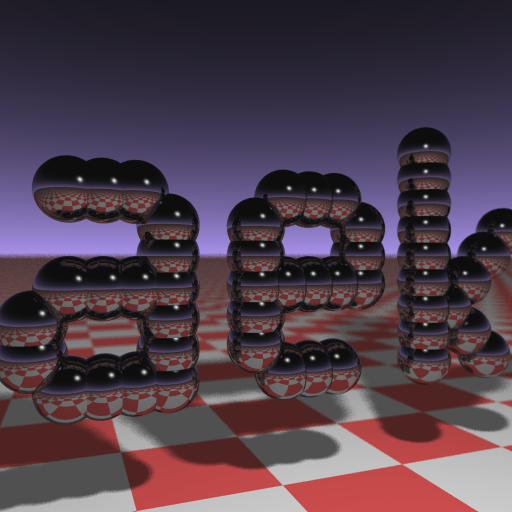What if Pascal Quadro cards run RTX?
Go to solution
Solved by Mira Yurizaki,
21 minutes ago, Jurrunio said:@Mira Yurizaki @Wh0_Am_1 I know Geforce and Quadro are the same when they come out from the fab, it's the software that makes them different in number crunching. what if the same "optimization" hack more performance out?
The optimizations that Quadros have over GeForce cards is typically for rasterized graphics. The thing with ray tracing is it's a very simple algorithm. This code:
#include <stdlib.h> // card > aek.ppm #include <stdio.h> #include <math.h> typedef int i; typedef float f; struct v { f x,y,z; v operator+(v r) { return v(x+r.x ,y+r.y,z+r.z); } v operator*(f r) { return v(x*r,y*r,z*r); } f operator%(v r) { return x*r.x+y*r.y+z*r.z; } v() {} v operator^(v r ) { return v(y*r.z-z*r.y,z*r.x-x*r.z,x*r. y-y*r.x); } v(f a,f b,f c) { x=a; y=b; z=c; } v operator!() { return*this*(1/sqrt(*this%* this)); } }; i G[]= {247570,280596,280600, 249748,18578,18577,231184,16,16 }; f R() { return(f)rand()/RAND_MAX; } i T(v o,v d,f &t,v&n) { t=1e9; i m=0; f p=-o.z/d.z; if(.01 <p)t=p,n=v(0,0,1),m=1; for(i k=19; k--;) for(i j=9; j--;)if(G[j]&1<<k) { v p=o+v(-k ,0,-j-4); f b=p%d,c=p%p-1,q=b*b-c; if(q>0 ) { f s=-b-sqrt(q); if(s<t&&s>.01)t=s,n=!( p+d*t),m=2; } } return m; } v S(v o,v d) { f t ; v n; i m=T(o,d,t,n); if(!m)return v(.7, .6,1)*pow(1-d.z,4); v h=o+d*t,l=!(v(9+R( ),9+R(),16)+h*-1),r=d+n*(n%d*-2); f b=l% n; if(b<0||T(h,l,t,n))b=0; f p=pow(l%r*(b >0),99); if(m&1) { h=h*.2; return((i)(ceil( h.x)+ceil(h.y))&1?v(3,1,1):v(3,3,3))*(b *.2+.1); } return v(p,p,p)+S(h,r)*.5; } i main() { printf("P6 512 512 255 "); v g=!v (-6,-16,0),a=!(v(0,0,1)^g)*.002,b=!(g^a )*.002,c=(a+b)*-256+g; for(i y=512; y--;) for(i x=512; x--;) { v p(13,13,13); for(i r =64; r--;) { v t=a*(R()-.5)*99+b*(R()-.5)* 99; p=S(v(17,16,8)+t,!(t*-1+(a*(R()+x)+b *(y+R())+c)*16))*3.5+p; } printf("%c%c%c" ,(i)p.x,(i)p.y,(i)p.z); } }
Produces this image:
The problem with ray tracing is simply how many data points you have to sample. The only way to "optimize" ray tracing is to dump data points.
EDIT: Code and image came from https://fabiensanglard.net/rayTracing_back_of_business_card/


















Create an account or sign in to comment
You need to be a member in order to leave a comment
Create an account
Sign up for a new account in our community. It's easy!
Register a new accountSign in
Already have an account? Sign in here.
Sign In Now